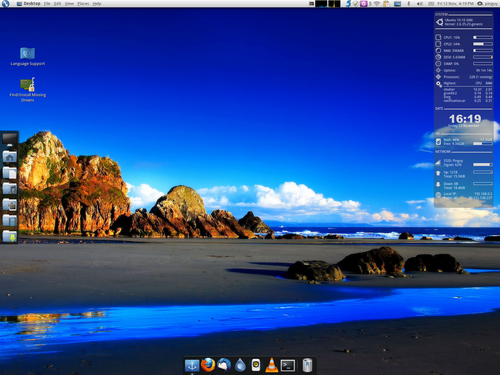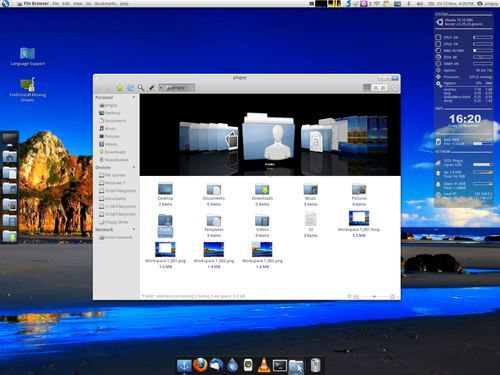Underscoring the confluence of technology, politics, and marketing, the World Wide Web Consortium today unveiled a new logo for HTML5. With the logo, the W3C wants to promote the new Web technology--and itself. The Web is growing far beyond its roots of housing static Web sites and is transforming into a vehicle for entertainment and a foundation for online applications. The W3C hopes the logo--T-shirts and stickers with it already are on sale--will fuel excitement and interest in the refurbished Web. "In addition to work on the specification, test suites, and useful materials for developers, we seek to raise awareness about W3C technology and to promote adoption of W3C standards," spokesman Ian Jacobs said. Curiously, though, the standards group--the very people one might expect to have the narrowest interpretation of what exactly HTML5 means--instead say it stands for a swath of new Web technologies extending well beyond the next version of Hypertext Markup Language. And some Web developers aren't happy about that. Web developer Jeremy Keith wrote today that the W3C just helped push HTML5 "into the linguistic sewer of buzzwordland."
Here's how the W3C put it: "The logo is a general-purpose visual identity for a broad set of open Web technologies, including HTML5, CSS, SVG, WOFF, and others," the W3C said in the FAQ about the HTML5 logo, referring to Cascading Style Sheets (CSS) for formatting and graphical effects, Scalable Vector Graphics (SVG) for advanced 2D graphics, and the Web Open Font Format (WOFF) for elaborate typography. "In addition to the HTML5 logo there are icons for eight high-level technology classes enabled by the HTML5 family of technologies. The icons can be used to highlight more specific abilities, such as offline, graphics, or connectivity."
Using "HTML5" to represent technologies well beyond the standard itself doesn't sit well with some developers who see a useful role in more precise terms. Bruce Lawson, an employee of browser maker Opera and co-author of a book on HTML5, has proposed the acronym NEWT--new exciting Web technologies
"Basically: #HTML5 logo = good thing. But disappointed to see CSS 3 conflated into it," Lawson tweeted today, pointing to his rather amusingly theatrical YouTube video about it. His case was likely something of a lost cause, though, even before the W3C itself offered a logo naming a specific standard to stand instead for a range of technologies. Apple, a company with vastly more marketing skill than most, launched an HTML5 showcase last year that extended well beyond HTML5--indeed it was probably better classified as a demonstration of new CSS than new HTML. There's a reason that marketing types preferred the broad definition of HTML5: it's hard to get people to understand a long series of acronyms from standards groups. And it seems unlikely Apple's promotional experts would get excited about an amphibian. To be fair to marketing department oversimplifiers, it's hard to keep track just of what the W3C is up to. Web Workers, Geolocation, IndexedDB, Web Sockets--all these are standards that are useful for the next-generation Web but that venture beyond HTML5, strictly defined. https://spinner.cnet.com/post.html?id=20028718&versionId=413456
But Web-development insiders reacted to the logo's broad definition with scorn, or at least raised eyebrows. Keith's blog post is titled "Badge of Shame":
What. A. Crock. What we have here is a deliberate attempt to further blur the lines between separate technologies that have already become intertwingled in media reports...
So now what do I do when I want to give a description of a workshop, or a talk, or a book that's actually about HTML5? If I just say "It's about HTML5," that will soon be as meaningful as saying "It's about Web 2.0," or "It's about leveraging the synergies of disruptive transmedia paradigms." The term HTML5 has, with the support of the W3C, been pushed into the linguistic sewer of buzzwordland.
And there was more carping:
• "Hmm, wow. I'm thinking a new logo representing 'the Web platform in a very general sense' is maybe not really what HTML5 needed the most," tweeted John Lilly, Greylock venture partner and former Mozilla chief executive.
• "CSS3 is now 'officially' part of HTML5," said a sarcastic tweet from Anne van Kesteren, who works on standards at Opera.
• Longtime Web developer Jeffery Zeldman called the logo's broad definition "misguided."
• "Nothing wrong with the #HTML5Logo itself, use it if you want, but including #CSS3 and other bits is just wrong and confusing," tweeted Web developer and HTML5 fan Ian Devlin.
• And HTML5 book co-author Remy Sharp asked, "Let's clear this up, once and for all: does the @w3c intend for 'CSS3' to be included as 'HTML5'?" Don't expect standardization work at the W3C will lose its ultra-precise wording in favor of loosey-goosey marketing terminology. But do expect W3C to promote its broader agenda in more general terms.
Jacobs said in a blog post that the W3C had begun an internal project in 2010 to create a logo for the "open Web platform"--another more general term for today's constellation of new Web technologies--but put it on hold. Today's HTML5 logo came instead from design firm Ocupop, which according to creative director Michael Nieling was developed with all the Web technologies in mind: The term HTML5 has taken on a life of its own; there has been significant confusion and debate both within the developer community and in the public at large as to what exactly HTML5 is when the term is used outside of simply referring to the spec itself. This variability in perception is what inspired the project--a group of developers and HTML5 evangelists came to us and posed the question, "How can we better communicate all of the technologies and potential that HTML5 represents?" ...and the resounding answer was, the standard needs a standard. That is, HTML5 needs a consistent, standardized visual vocabulary to serve as a framework for conversations, presentations, and explanations moving forward...Nieling himself said, though, that the designers don't get the last word about what exactly the logo means
"I am confident that we've provided a very clear and effective baseline of vocabulary for HTML5," he said. "The syntax and ultimate meaning is up to the community."
Source: Cnet.com













